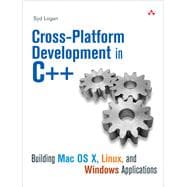
What is included with this book?
Syd Logan is a software developer living and working in Southern California. A graduate of San Diego State University with B.S. and M.S. degrees in computer science, Syd was a member of the Netscape Client Product Development (CPD) team, where he held both engineering and management positions during the development of Netscape 6 and 7. After Netscape, Syd remained at AOL where he implemented VoIP and peer-to-peer video features as a member of the AOL Instant Messenger team. Syd’s previous publications include Developing Imaging Applications with XIELib and Gtk+ Programming in C (Prentice Hall, 1997 and 2001). His technical interests include machine learning, operating systems design, algorithms, and just about anything that has to do with C, C++, and Unix.
| Policy and Management | p. 17 |
| Build System/Toolchain | p. 65 |
| Software Configuration Management | p. 131 |
| Installation and Deployment | p. 165 |
| Operating System Interfaces and Libraries | p. 221 |
| Miscellaneous Portability Topics | p. 273 |
| User Interfaces | p. 303 |
| wxWidgets | p. 329 |
| Developing a Cross-Platform GUI Toolkit in C++ | p. 427 |
| Table of Contents provided by Blackwell. All Rights Reserved. |
The New copy of this book will include any supplemental materials advertised. Please check the title of the book to determine if it should include any access cards, study guides, lab manuals, CDs, etc.
The Used, Rental and eBook copies of this book are not guaranteed to include any supplemental materials. Typically, only the book itself is included. This is true even if the title states it includes any access cards, study guides, lab manuals, CDs, etc.